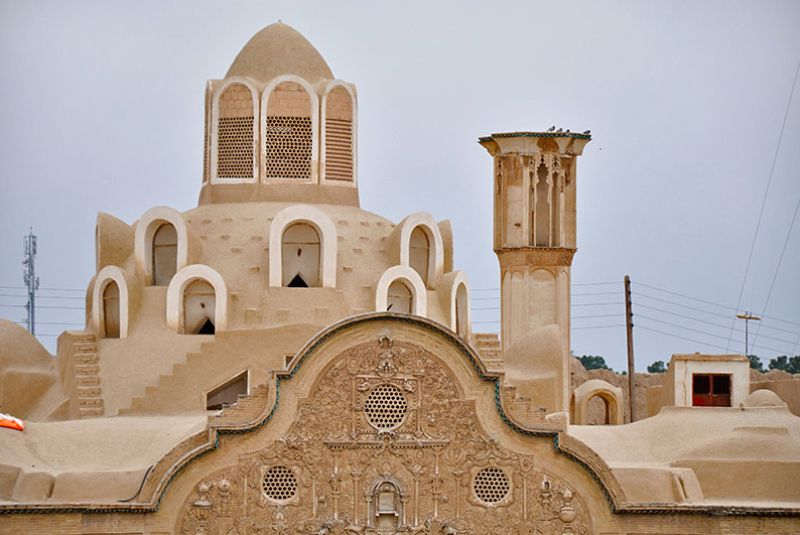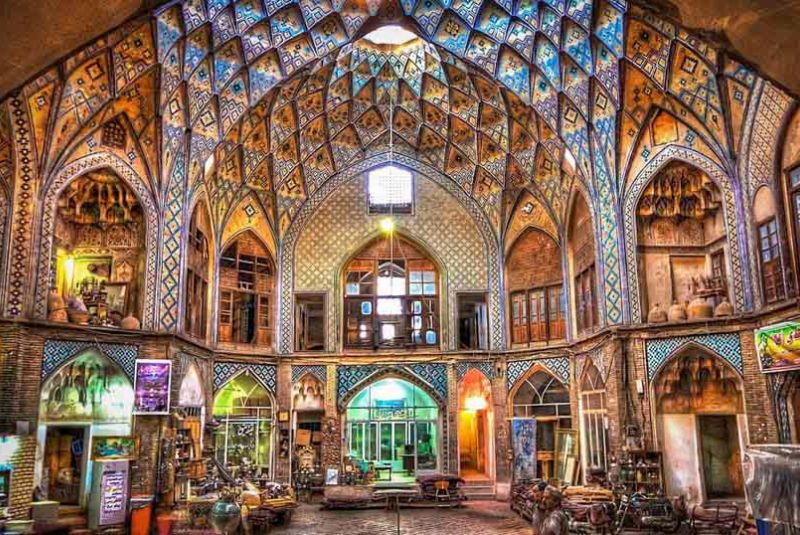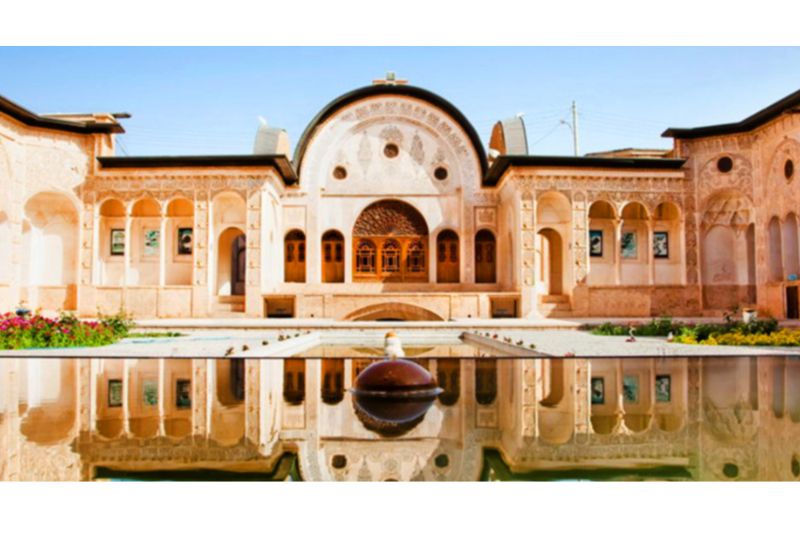Kashan Tours
TOURS
Sorry, no results were found
Kashan Tours
Begin your affordable adventure with Eavar's thoughtfully crafted Kashan tours, offering a variety of options to suit all tastes and providing delightful and customized travel journeys for everyone.
Kashan is a city located in the Isfahan province of Iran. With a history spanning over 7,000 years, the city is home to several historical and cultural attractions and natural wonders. Kashan is situated along the ancient Silk Road and has played an essential role in the country's commercial and cultural exchange.
Tourism is a vital industry in Kashan and a significant source of local income. Kashan is renowned for its rich history, cultural heritage, and stunning natural landscapes, attracting millions of visitors annually. The city offers a range of activities and experiences, from exploring historical sites and museums to enjoying traditional cuisine and handicrafts. The tourism industry in Kashan has also contributed to preserving and restoring its historical and cultural assets.
Kashan Geographical Location and Climate

Kashan is located in the Isfahan province of Iran, approximately 220 kilometers south of Tehran's capital. It is situated at an elevation of 982 meters above sea level and covers an area of roughly 85 square kilometers.
Kashan is surrounded by mountains on all sides, with the Karkas range to the east, the Central Iranian Plateau to the west, and the Qom Salt Lake to the north. The city is located in a desert region and experiences a hot and dry climate, with temperatures often exceeding 40 degrees Celsius (104 degrees Fahrenheit) during the summer months.
Despite its arid climate, Kashan's unique geographical location has contributed to the creation of several natural and cultural attractions in the region, making it a popular destination for tourists visiting Iran.
Kashan Historical and Cultural Attractions

Here are some of the most famous Kashan tourist attractions:
Fin Garden
The Fin Garden, or Bagh-e Fin, is a historical Persian garden in Kashan. It was built during the reign of Shah Abbas I in the late 16th century and has since been a popular destination for tourists. The garden is known for its historical significance, as it was the site of the assassination of Amir Kabir, the chief minister of Naser al-Din Shah Qajar, in 1852. The garden is also listed as a UNESCO World Heritage Site.
The Fin Garden is an example of Persian garden design, emphasizing paradise on earth.
The Fin Garden is also known for its natural features, which include several water features, such as a large pool, a waterfall, and a network of underground aqueducts. The garden also contains several fruit trees, such as pomegranate and grapefruit trees, which are popular with visitors. Overall, the Fin Garden is a beautiful and tranquil oasis in the heart of Kashan and a must-visit for anyone interested in Persian culture and history.
Agha Bozorg Mosque
The Agha Bozorg Mosque is a historical mosque in Kashan's center. It was built during the late 18th century by the architect Ustad Haj Sa'ban-Ali. The mosque is known for its historical significance, as it was a center of theological education and scholarship during the Qajar period. It also played an essential role in the 1979 Iranian Revolution.
The Agha Bozorg Mosque is known for its unique architecture and design that you should not miss!
Tabatabaei House
The Tabatabaei House is a beautiful historical house in Kashan's old quarter. It was built during the late 19th century by a wealthy merchant named Abbasian. The place is known for its beautiful architecture and design and is considered one of the finest examples of traditional Persian residential architecture.
The house features several courtyards, each with its purpose. The central courtyard is the largest and features a beautiful fountain and several trees. The Tabatabaei House is known for its exquisite decorative features and elements, including intricate tile work, stucco, and woodwork. The stucco work in the house is also a masterpiece of Persian art and architecture.
The Tabatabaei House is a beautiful and unique example of traditional Persian residential architecture. The combination of beautiful tilework, stucco, and woodwork creates a beautiful and elegant atmosphere that will impress visitors. The house is a must-visit for anyone interested in Persian art and architecture.
Sultan Amir Ahmad Bathhouse
The Sultan Amir Ahmad Bathhouse is a historic bathhouse in Kashan, Iran. It was built during the 16th century, during the Safavid era, by Sultan Amir Ahmad, a wealthy nobleman. The bathhouse features beautiful Persian architecture and is known for its intricate tile work and stucco designs.
The bathhouse was built with a traditional Iranian bathhouse layout, which includes several rooms for heating, cooling, and washing.
The Sultan Amir Ahmad Bathhouse is not only a beautiful example of traditional Persian architecture, but it is also an essential cultural landmark in Kashan. The bathhouse played a significant role in Iranian culture during the Safavid era, serving as a social hub for both men and women. The bathhouse was where people could unite, relax, and engage in social activities.
Today, the Sultan Amir Ahmad Bathhouse is a popular tourist destination, attracting visitors from all over the world who come to admire its beautiful architecture and learn about Persian culture. The bathhouse has been carefully restored and preserved, and visitors can experience what it was like to visit a traditional Persian bathhouse. The bathhouse also features several exhibits and displays that showcase the history and culture of Kashan and Iran.
In addition to its cultural significance, the Sultan Amir Ahmad Bathhouse is also known for its therapeutic benefits. The hot and cold pools and steam rooms are believed to have health benefits, and visitors can partake in traditional Persian massages and other wellness treatments.
Overall, the Sultan Amir Ahmad Bathhouse is a must-visit destination for anyone interested in Persian culture, history, and architecture. Its beautiful design and cultural significance make it a unique and fascinating landmark in Kashan.

Kashan Natural Attractions
In addition to historical and cultural attractions, Kashan has lots of natural attractions; some of the most famous Kashan natural attractions are as below:
Maranjab Desert
The Maranjab Desert is a stunning natural attraction located just outside of Kashan. The desert spans over 150 square kilometers and features a variety of geological formations, including dunes, salt flats, and rocky outcrops. The desert is situated at the northern edge of the Dasht-e Kavir, one of the largest deserts in Iran.
The Maranjab Desert is a popular destination for adventure and leisure activities. Visitors can go on guided tours of the desert on foot or by camel, ride dune buggies, or even go sandboarding. The desert is also great for stargazing, as the lack of light pollution provides a clear view of the night sky.
Qamsar Rose Water Distillation Sites
Qamsar is a village near Kashan famous for its rose water production. The town has been producing rose water for hundreds of years and is home to several distillation sites where visitors can learn about the traditional rose water production process.
Rose water has been an essential part of Persian culture for centuries, and Qamsar is known for producing some of the best rose water in the world. The village's rose water production is an important cultural tradition from generation to generation. Every year, during the rose harvesting season, the town holds a festival where visitors can witness the rose harvesting and production process.
The Qamsar Rose Water Distillation Sites is a unique and fascinating attraction in Kashan. Visitors can learn about a traditional Persian cultural practice while enjoying the fragrant aroma of rose water.
Kashan Local Cuisine
Kashan is renowned for its delicious traditional cuisine, which features a blend of flavors and spices unique to the region. Some of the most popular dishes include:
- Biryani: A rice dish cooked with lamb or chicken and flavored with spices, including saffron and cardamom.
- Gheimeh: A stew made with meat, split peas, and tomatoes and served with rice.
- Abgoosht: A hearty soup made with lamb, beans, tomatoes, and spices.
- Fesenjan: A chicken or lamb dish cooked in a rich sauce made from pomegranate juice and ground walnuts.
Kashan Local Handicrafts And Souvenirs
Kashan is also known for its beautiful handicrafts and souvenirs. Some of the most popular items include:
- Pottery: Kashan has a long history of pottery making, and visitors can find a variety of beautiful ceramics in the local shops.
- Textiles: Kashan is famous for its silk and wool textiles, which are handwoven and often feature intricate designs.
- Carpets: The region around Kashan is known for producing some of the world's finest Persian carpets, with designs ranging from traditional to modern.
- Rose water: As mentioned earlier, Qamsar, a village near Kashan, is famous for its rose water production. Visitors can purchase bottles of fragrant rose water to take home as a souvenir.

Kashan Tours Price
The cost of a tour in Kashan can vary depending on several factors, such as the type and duration of the tour, the level of accommodation and transportation included, and the number of people in the group. For example, a guided tour that includes transportation, lodging, and meals may cost more than a self-guided tour requiring travellers to arrange transportation and accommodation.
Another factor that may affect tour prices in Kashan is the time of year. Tourist seasons and local events can affect the availability and cost of tours in the region. For example, peak travel season in Kashan is generally from March to May and from September to November, when the weather is more relaxed and more comfortable for outdoor activities.
If you need further information about Kashan Tours' price, don't hesitate to get in touch with us via incoming@eavar.com.
